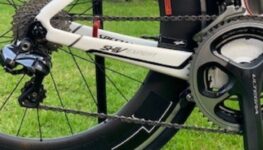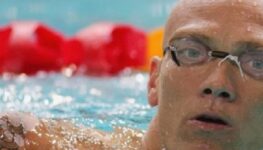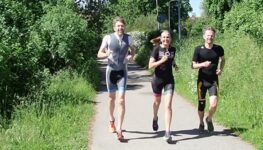Should you try to increase VO2max?
Podcast by Science of Ultra
V̇O2max is the maximum amount of oxygen your body can use per minute. Working at or close to your V̇O2max range can only be sustained for 6-10 minutes (the fitter you are the closer you are to the 10min mark).
It is a topic that is always in sports news / marketing / and social media postings! It’s a buzz phrase and training focus for so many athletes / coaches, but does it deserve so much fuss and overemphasis – can it only be improved with magical workouts, or can it be trained all the time?!
We wrote about the topic in a two part article series back in April and May, so you already know our approach to training, keeping things simple and “honest”; to save you wasting time and not getting you ready for triathlons!
This podcast, a discussion between 4 ultra-running coaches, allows them to each vote on whether they think it is a focus point for training their athletes or not. At the start, we hear that 2 coaches use V̇O2max efforts, and 2 don’t focus on it. However, as the discussions continue, it soon becomes clear that the two that do use V̇O2max efforts mainly use it to add variety to training (one stated he uses it to try to increase the V̇O2max ceiling, but it is soon expanded on and his reasoning is rephrased as V̇O2max is genetic, can be trained indirectly and there is a limited amount that it can be increased).
The reasons the other two don’t focus on V̇O2max training is because:
- It’s a measure of oxygen uptake and utilisation – not a contributor to performance
- V̇O2max won’t go up much – its genetic
- It’s an intensity range that can be held for 6-10min, triathlons (all distances) are longer than 10min!
- V̇O2max training does not raise your maximum sustainable speed
- Also, not mentioned in this episode, V̇O2max testing is not overly reliable, the test equipment is notoriously difficult to calibrate, and a lack of understanding/knowing the athlete, and their ability, limits test outcomes and so human error (the testers lack of competency) is high
We don’t prescribe V̇O2max efforts in your training, but we do prescribe plenty of speed work and threshold / lactate work, to build your neuromuscular strength and sustainable efforts. STOMPS and race pace sessions on the bike, hill reps, speed sessions and the “kick-up” efforts in the runs (15sec build to FAST) all help build your muscular strength and efficiency as well as working on increasing your threshold levels. As outlined in our articles building strength and threshold levels, alongside training plenty of easy efforts, does improve V̇O2max…
With the mix of aerobic work, strength and threshold efforts, you will gradually reach your genetic V̇O2max potential, without needing to follow gruelling (and over-reaching) V̇O2max training plans, which, as discussed, don’t benefit endurance athletes!
Why don’t we prescribe harder effort pace work in our workouts – choosing to use EASY, MEDIUM and HARD instead? Simply because the percentages of pace that are often quoted as necessary to hit specific training intensities are largely theoretical, generalised and they are rigid; and not considering other stresses in life.
Beware of training, testing and racing terminology – there are multiple test protocols and intensities quoted by coaches and in the media that refer to the same thing but are different! As an example, they discuss critical speed in this episode – one referred to a 10min test, another referred to a 3min test. “Threshold” “Sweet Spot”, “Tempo” and “FTP” are no different, there are many tests and various training level models that are used – your Level 3 (MEDIUM) effort is going to be different to your friends Level 3 (unless they are coached by us!).
Again, listen to why they don’t abide to the critical speed testing outcomes – because the testing is based on a flat route, not suitable for inclines, off road and differing climates. This is why we don’t prescribe power, HR, paces, etc in race briefs. There are no tests specific to trail running, just as there aren’t for triathlons!
Ok, enough from us, have a listen and take on board their thoughts, experiences from coaching and why high intensity testing and “scientific” training levels are not suitable to endurance (multisport) athletes.



